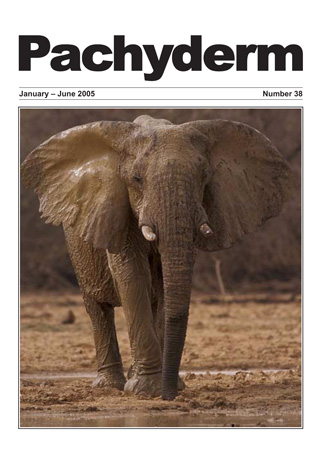Elephants in Côte d'Ivoire - a warning for West African conservation
DOI:
https://doi.org/10.69649/pachyderm.v38i1.1222Abstract
As its name implies Ivory Coast probably maintained one of the largest elephant populations in West Africa at the time of early European contact. Today its population occurs in small isolated enclaves. While the ivory trade did cause heavy losses at its peak it is the destruction of their habitat which has been largly responsible for the drop in elephant numbers over the past decade. 'Major elephant habitats in forest (Tai NP) and savanna (Comoe NP) remain intact, but potential immigration from other sites or even re-introduction of elephants would require significant improvement in park management and nature conservation'. Author suggests that at present Ivory Coast holds only seven confirmed elephant populations totally about 270 animals and does not think any populations exist outside protected areas. As late as 1997 Comoe NP may have held around 120 elephants, but since 1998 direct observations have been rare. After 1999 a few sightings in the vicinity of the village of Gorowi near the southern part of the park noted 11-15 animals. Human-elephant conflicts were reported in the vicinity of Marahoue NP during the late 1990s, and in July 2002 the MIKE team estimated about 160 were in the area. Recently the Tai NP elephant population has no doubt been affected by both Liberian and Ivorian refugees, the author gives no estimate as the 2002 MIKE survey is not yet available. In 2003 an estimate for Azagny NP elephants was about 65 animals. No elephants were seen during 2002 rennaissance flights in either Haut Banana GR or in the Bossematie/Bek forest complex. About 30 animals are thought to be present in the Haut Sassandra FR. (Blanc et al., 2002: Barnes, 2002: Fischer et al., 2002.: Ouattara, 2002 and 2003)
Downloads
Published
How to Cite
Issue
Section
License
Copyright (c) 2005 Frauke Fischer

This work is licensed under a Creative Commons Attribution-NonCommercial 4.0 International License.




